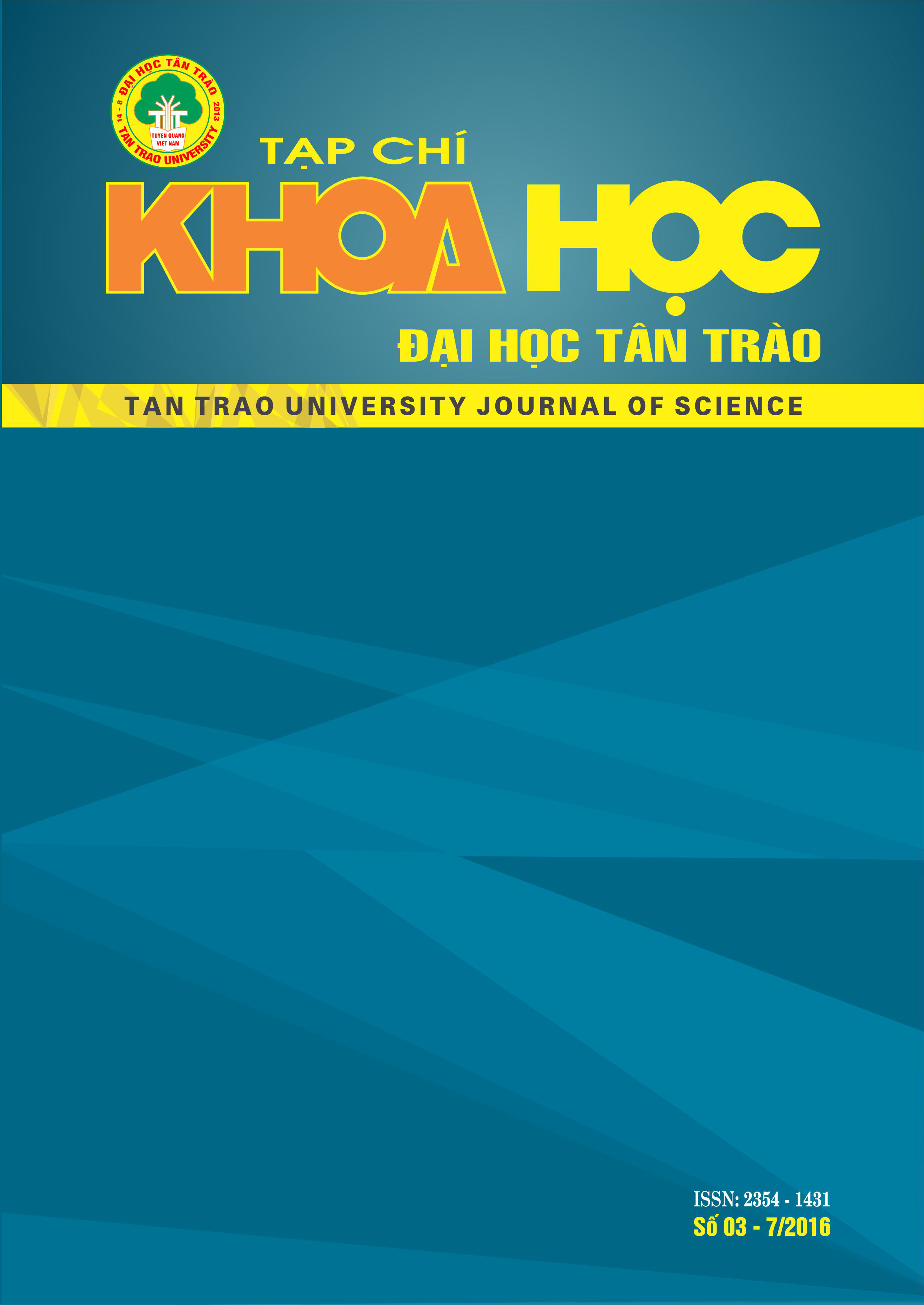VẤN ĐỀ LỰA CHỌN CHỮ MÔNG TRONG ĐÀO TẠO, BỒI DƯỠNG TIẾNG MÔNG HIỆN NAY (NHÌN TỪ THỰC TIỄN TẠI HAI TỈNH BẮC KẠN VÀ THÁI NGUYÊN)
DOI:
https://doi.org/10.51453/2354-1431/2016/103Từ khóa:
Ä‘Ã o tạo, bồi dưỡng, tiếng Mông, chữ Mông, Thái Nguyên, Bắc KạnTóm tắt
Hiện nay trên thế giới có nhiều loại chữ Mông, song phổ biến và tiện lợi nhất là bộ chữ mà người Mông ở Việt Nam quen gọi là chữ Mông Quốc tế (tên tiếng Anh là Romanized Popular Alphabet – RPA hoặc Hmong RPA).
Ở Việt Nam, hiện vẫn còn tồn tại bộ chữ Mông do Bộ Giáo dục và Đào tạo ban hành năm 1961, vẫn thường được gọi là Chữ Mông Việt Nam hay Chữ Mông Bác Hồ.
Việc giảng dạy tiếng/chữ Mông cho đội ngũ cán bộ công chức công tác ở vùng dân tộc, miền núi, cũng như việc dạy chữ Mông cho đồng bào Mông nói chung, còn có những bất cập, không thống nhất trong việc lựa chọn bộ chữ Mông nào.
Quan điểm của chúng tôi: cần đưa vào giảng dạy bộ chữ Mông Quốc tế vì những ưu việt trong sử dụng và phổ biến, thay cho bộ chữ Mông Việt Nam ngày càng ít người sử dụng và bộc lộ nhiều hạn chế.
Tải xuống
Tài liệu tham khảo
1. Bộ Giáo dục và Đào tạo (2006), Tài liệu tập huấn giáo viên dạy tiếng Mông cho cán bộ công chức công tác ở vùng dân tộc Mông, Hà Nội;
2. Bộ Giáo dục và Đào tạo (2006), Quyết định về việc ban hành chương trình tiếng Mông dùng để đào tạo giáo viên dạy tiếng Mông cho cán bộ, công chức công tác ở vùng dân tộc, miền núi;
3. Nguyễn Văn Chinh (chủ biên), Cư Hòa Vần, Nguyễn Trọng Báu (1996), Từ điển Việt -Mông, Nxb Văn hóa Dân tộc, Hà Nội;
4. Phan Hữu Dật (2003), Mấy vấn đề lý luận và thực tiễn cấp bách liên quan đến mối quan hệ dân tộc hiện nay, Nxb Chính trị Quốc gia, Hà Nội;
5. Trần Trí Dõi (1999), Nghiên cứu ngôn ngữ các dân tộc thiểu số Việt Nam, Nxb Đại học Quốc gia, Hà Nội;
6. Đại học Thái Nguyên - Trường Đại học Sư phạm (2005), “Bảo tồn và phát triển ngôn ngữ văn hóa dân tộc Mông”, Kỷ yếu Hội thảo khoa học;
7. Vũ quốc Khánh (chủ biên, 2005), Dân tộc Mông ở Việt Nam, Nxb Thông tấn, Hà Nội;
8. F. Savina (1924), Lịch sử người Mèo, Bản dịch của Trương Thị Thọ và Đỗ Trọng Quang, Phòng tư liệu, thư viện Dân tộc học, Hà Nội;
9. Nguyễn Năng Tân (chủ biên, 1996), HMôngz ntơưn, Nxb Giáo dục, Hà Nội;
10. Thủ tướng Chính phủ (2004), Chỉ thị về việc đẩy mạnh đào tạo, bồi dưỡng tiếng dân tộc thiểu số đối với cán bộ, công chức công tác ở vùng dân tộc, miền núi;
11. Yang Dao (1992), “Người Mông - Những truyền thống bền vững”, Văn hóa các dân tộc ở Lào, Trung tâm nghiên cứu cộng đồng Đông Nam Á, Canifornia, Hoa Kì.
Tải xuống
Đã Xuất bản
Cách trích dẫn
Số
Chuyên mục
Giấy phép

Tác phẩm này được cấp phép theo Giấy phép Quốc tế Creative Commons Attribution-ShareAlike 4.0 .
Bài báo được xuất bản ở Tạp chí Khoa học Đại học Tân Trào được cấp phép theo giấy phép Ghi công - Chia sẻ tương tự 4.0 Quốc tế (CC BY-SA). Theo đó, các tác giả khác có thể sao chép, chuyển đổi hay phân phối lại các bài báo này với mục đích hợp pháp trên mọi phương tiện, với điều kiện họ trích dẫn tác giả, Tạp chí Khoa học Đại học Tân Trào và đường link đến bản quyền; nêu rõ các thay đổi đã thực hiện và các nghiên cứu đăng lại được tiến hành theo cùng một bản quyền.
Bản quyền bài báo thuộc về các tác giả, không hạn chế số lượng. Tạp chí Khoa học Tân Trào được cấp giấy phép không độc quyền để xuất bản bài báo với tư cách nhà xuất bản nguồn, kèm theo quyền thương mại để in các bài báo cung cấp cho các thư viện và cá nhân.
Mặc dù các điều khoản của giấy phép CC BY-SA không dành cho các tác giả (với tư cách là người giữ bản quyền của bài báo, họ không bị hạn chế về quyền hạn), khi gửi bài tới Tạp chí Khoa học Đại học Tân Trào, tác giả cần đáp ứng quyền của độc giả, và cần cấp quyền cho bên thứ 3 sử dụng bài báo của họ trong phạm vi của giấy phép.






